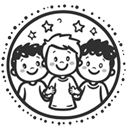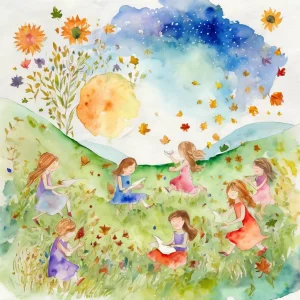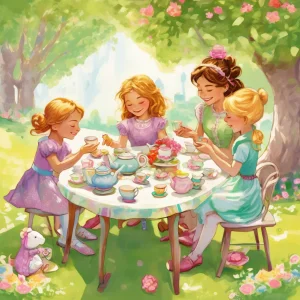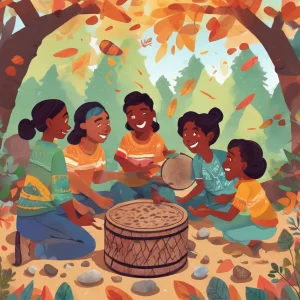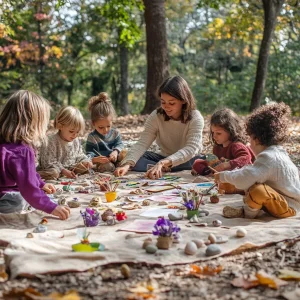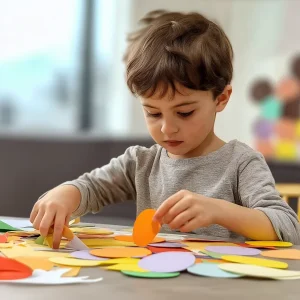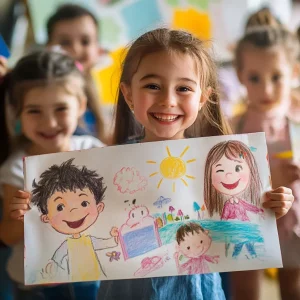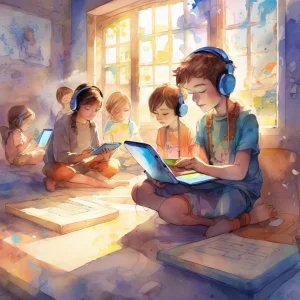Activity
Similar Activities
Whispers of the Seasons: Seasonal Collage Exploration
Children’s Age: 5–6 years
Activity Duration: 10 minutes
Engaging activity where children create collages representing different seasons.
Activity Duration: 10 minutes
Cultural Creatures: Stop-Motion Animation Adventure
Children’s Age: 4–9 years
Activity Duration: 10 – 25 minutes
An interactive activity using technology to create stop-motion animations exploring plants and animals from diverse cultures.
Activity Duration: 10 – 25 minutes
Enchanted Tea Party Adventure: A Magical Journey
Children’s Age: 3 years
Activity Duration: 10 – 15 minutes
Join us for a Magical Tea Party Adventure! Enhance your child's play skills, social-emotional growth, and language abilities through a whimsical tea party experience. Gather teacup…
Activity Duration: 10 – 15 minutes
Whispers of Nature Rhythms: Exploring Beats and Patterns
Children’s Age: 3–7 years
Activity Duration: 10 – 30 minutes
Let's explore "Nature Rhythms" together! We will listen to nature's beats and patterns using rocks, sticks, leaves, and pinecones. Find a safe outdoor spot, gather natural material…
Activity Duration: 10 – 30 minutes
Nature Explorers: Scavenger Hunt & Art
Children’s Age: 2–6 years
Activity Duration: 10 minutes
Let's go on a Nature Scavenger Hunt and Outdoor Art adventure! We will explore nature, collect items, and create beautiful artwork. You will need a bag, paper, crayons, watercolors…
Activity Duration: 10 minutes
Rainbow Caterpillar Creation: A Colorful Adventure
Children’s Age: 6–10 years
Activity Duration: 10 – 20 minutes
In this fun activity called "Creating a Colorful Caterpillar," children can explore their creativity and improve their fine motor skills and understanding of sequencing. To begin, …
Activity Duration: 10 – 20 minutes
Magical Storytelling: Create Together with Friends
Children’s Age: 4–6 years
Activity Duration: 15 – 30 minutes
In the Create a Story Together activity, children will explore their creativity, language skills, and teamwork. Get small pieces of paper, colored pencils, and a container ready. K…
Activity Duration: 15 – 30 minutes
Whispering Leaves: A Nature Dance Tale
Children’s Age: 6–10 years
Activity Duration: 20 – 30 minutes
Explore the "Nature Dance Story Circle" activity for children aged 6 to 10, focusing on communication, ecology, and values. Create a safe, spacious setting with a blanket and natur…
Activity Duration: 20 – 30 minutes
Whispers of Nature: Nature Collage Creations
Children’s Age: 2–2.5 years
Activity Duration: 15 minutes
Explore the "Nature Collage Creations" activity tailored for 24 to 30-month-old children, fostering motor skills, language development, and empathy through crafting. Gather leaves,…
Activity Duration: 15 minutes
Empathy Tales: Digital Storytelling Journey
Children’s Age: 6–10 years
Activity Duration: 15 minutes
"Digital Storytelling with Empathy" is a creative activity for children aged 6 to 10, focusing on empathy, self-regulation, and language skills using digital tools. With a tablet o…
Activity Duration: 15 minutes
Enchanted Forest: Nature Theater Digital Adventure
Children’s Age: 6–10 years
Activity Duration: 30 minutes
The "Nature Theater: Digital Storytelling Adventure" activity blends nature, theater, and technology to nurture children's creativity, cognitive skills, and self-regulation abiliti…
Activity Duration: 30 minutes
Whispers of Nature: The Nature Story Stones
Children’s Age: 3–4 years
Activity Duration: 20 minutes
The Nature Story Stones activity is designed for children aged 36 to 48 months to boost their communication abilities through nature-themed storytelling. Gather smooth stones, pain…
Activity Duration: 20 minutes





